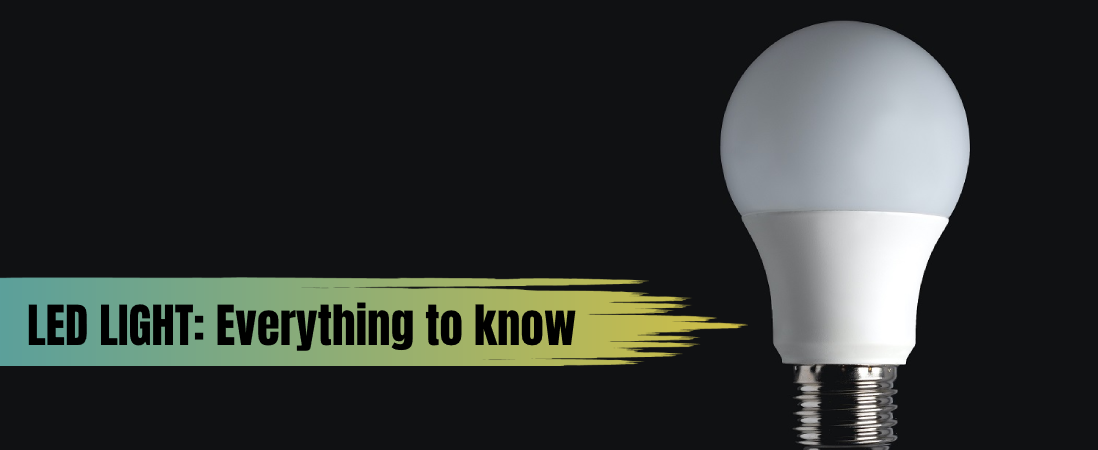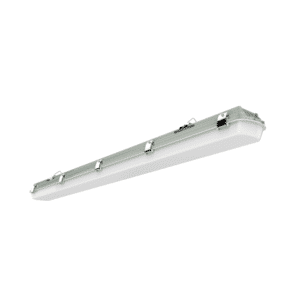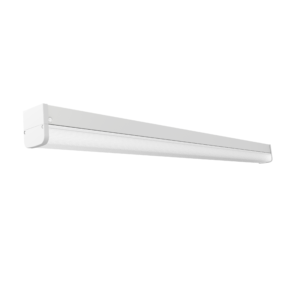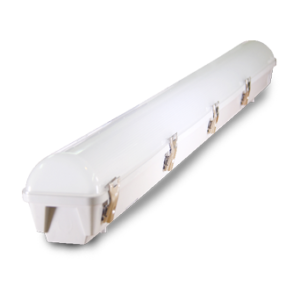
Lighting has come a long way with technological developments moving the lighting industry forward. Incandescent lights have been around longer, […]

LEDs stand for Light Emitting Diodes, and are solid-state diodes that require little energy to work and last longer than your standard filament bulbs.
They produce light when an electrical current passes through the semiconductor, which dissipates light energy.
Understanding the LED prime structure gives a clearer interpretation of the complete lighting process. The optic is a key element in the LED which is responsible for the forward directional feature of the light and is made of plastic to reduce the potential for damage.
LED Brilliance Starts Here, Just $33. Shine Brighter, Save More!
Our Team of Experts Will Guide You Through The ESS Lighting Upgrading Process To Ensure You Achieve The Most Effective Energy Efficient Improvement Possible, GUARANTEED!
A Brighter Home, A Brighter Future!
Another part are the LED chips that produce the lights and are fixed on the heat sink. The circuit board of the LED fixture is the power control and regulation unit, which is associated with the driver.
This section controls the LED to turn on, turn off or to dim up and down, when current is drawn from the electrical source. It also enables more advanced functions of temperature or colour changes.
The housing is the holding enclosure for the LED lamp and is typically constructed from aluminium, and the base is the bottom section of the bulb.
These parts are common to a variety of LED types, that are constructed under different circumstances and have varying technology, to be used for different purposes.
One type is High power LEDs which are LED lights with large power ratings, and are used for spotlights, stages and even flashlights.
Another type is Bi-color LEDs which, as the name suggests, emit two colours depending on the configuration of the leads, which are usually two anodes and a cathode.
A common LED type is the RGB LED. RGB is an abbreviation for Red, Blue, and Green colours and the LEDs produce the range of colours mentioned.
SMD LED types stand for surface mount light-emitting diodes and can be easily spotted due to their physical dimensions.
One final type is the 5 millimetre LED. It has two leads, an anode and a cathode, usually annotated A and C, respectively.
The anode has a longer lead and is usually rounded, while the cathode is shorter and is filed down flat. The anode is the side where the current flows into the LED, while the cathode is where the current flows out.
Additionally, the longevity of LED bulbs is exceptional, making them great solutions for residential and commercial spaces, with far greater advantages compared to conventional lighting solutions.
LED lights typically last anywhere from 50,000 to 100,000 hours, making their lifetimes more than two times greater than that of incandescent, halogen and sodium vapour light.
You may also like 10 real benefits of LED lights for your home and business.
An LED is a light-emitting diode that generates power when energy flows from the anode (positive side) to the electrode (negative side).
The abbreviation LED stands for ‘Light Emitting Diode.’ LEDs are essentially small bulbs that use minimal energy to emit light and are far more effective at creating vast amounts of bright light.
Even though LED lighting has been there for a long time, there is general scepticism surrounding consumers’ choices when buying it.
This blog will thoroughly address LEDs as an alternative modern alternative to consider, and will address all the questions you might have, to give you an informed and expansive understanding of LEDs.
To understand the discrepancies between current LEDs and traditional light bulbs, we will first target the types of LED lights and colour temperature levels before going over the installation methods.
The science behind LED lighting is simple, and as mentioned above, it operates by electroluminescence.
This means LED bulbs produce light through the use of a semiconductor material (diode) that emits light (photons) when an electrical current passes through it.
LED light is created by joining the P-type semiconductor to the N-type semiconductor forming a p-n junction.
The depletion layer separates the two layers. A p-n junction is made up of a weak layer of heavily doped semiconductor materials.
Depending on the semiconductor material and the amount of doping material, the junction will light up when subjected to a forward bias (explained below). When there is forward bias, the electrons in the conduction band of the semiconductors recombine with the holes from the covalent bond.
During the recombination process, it will release enough energy-producing photons. The photons emitted from the above processes will have a colour wavelength that depends on the type and amount of doping material used in the production.
To try using LED lights, here are some factors that you need to consider:
1. Polarity.
This refers to the way the wires are connected in a circuit. As mentioned above, you need to understand the anode and the cathode and how they look.
2. Forward voltage.
This refers to the amount of voltage needed for the current to go through the diode junction. Every LED will have a forward voltage that’s a little different. Once the LED is on, there’ll be a comparatively constant drop across it.
3. Maximum current Limit.
If you significantly exceed the LED forward voltage rate, maximum currents will flow through the LED and most probably blow it up. There must be something to limit the quantity of current to a secure value.
This allows for the safe and practical use of LED lights in your space.
The era of traditional incandescent lighting for commercial and household applications is on the decline and it is time to move on to newer technologies.
Conventional incandescent light bulbs have been phased out instead of outlawed. Energy Conservation and ecological awareness have created a widespread demand for alternative and innovative technologies, and LED technologies can be 25% more efficient.
These are some of the great reasons to choose LEDs right now:
A dimmable bulb can be configured to different lumen outputs based on the illumination required for a specific area, where the bulb is controlled by a smart hub or control device that modulates the intensity as desired.
To use a dimmable bulb, the appropriate electrical equipment must be used in conjunction to ensure proper operation.
Also read:LED dimmer- Everything You Need to Know
When it comes to LED lights, customers can choose between dimmable and non-dimmable options. Depending on your light requirements, dimmable lights can be adjusted to meet high or low illumination levels.
If a circuit for dimming lights has been installed, the user must buy dimmable lights to ensure proper operation, and likewise for non-dimmable drivers and circuits that only operate non-dimmable LED lights.
Upgrading all the conventional lighting fixtures in the household with LED alternatives can be a costly project, since on average, an LED Light bulb can cost almost 14 times more than an incandescent light bulb and nearly four times as much as a compact fluorescent lamp bulb.
On the other hand, LED lights operate for an average of 50,000-hours, which is roughly 50 times the life of an incandescent bulb and almost ten times the life of a CFL.
Due to their high efficiency, LED lights are also considerably cheaper to operate each hour. Meaning despite their higher initial cost, their extended longevity and lower operating costs make them the more cost-effective choice over time.
The energy efficiency of Light bulbs is a significant advantage over conventional light options. Their efficiency is more than 80% that of incandescent bulbs, as they turn 90 per cent of their power into lighting, whereas older lights produce a large amount of heat.
This has two profound implications. The first is that the user’s electric bill is substantially lowered. Compared to using vintage filament bulbs, you will observe a significant reduction in the amount you pay for illuminating.
The second element, which is the more important one, relates to the contribution of LED retrofits in the global effort to reduce energy consumption.
Miniature LEDs –These are tiny LEDs that are only available with a single hue or form. This LED is used mainly for display in tv remotes, calculators and cell phones.
Dimmable LEDs: Dimmed LEDs generate varying effects. This type of light is often used to develop a custom atmosphere, and alternate the setting based on the specific and changing requirements of the space.
High-Brightness LEDs — As a result of various breakthroughs in LED technology, LEDs with high outputs are now accessible.
Lighting LED Bulbs — These are light bulbs that can be found in the household and often replicate the traditional Edison bulb.
Flashing LEDs – These are utilized in areas where the purpose is to call attention, such as commercial signage, other types of exhibit display, and car indicators and lighting.
Pro-Tips
Lower temperature lights generate warmer whites. In contrast, moderate temperature LEDs generate flat whites, and cool whites are created by high temperature lights, which resemble sunlight.
Instead of relying on watts, LEDs use lumen outputs to determine how bright a light source will be. A higher lumen output means the light is more robust. On average, 1 watt of incandescent light is equivalent to around 9 lumens of LED output.
A widespread fallacy is that a light bulb’s luminance is evaluated in Watts. Watts are used to quantify energy consumption, while Lumens are used to quantify luminosity.
Also read: What is CRI in Lighting and Why is It So Important?
The term “colour temperature” focuses on characterizing the colour of luminous intensity by a bulb. It is a way of describing the appearance of the light output.
LED lights offer an excellent type of lighting for illuminating and highlighting items in their best state, making these lights a great option for different occasions. LED lights are used in most places, including residential, office and commercial spaces, and can be found in the following applications:
Led lights have helped in the development of modern television by improving the quality of pictures and the contrast. Moreover, the LED light ensures less electricity consumption considering the immense amount of backlight televisions use. LED lights are used in digital computers and calculators as well.
Implementing LED lights in phones, the backlighting of smartphones is made narrower and ensures a long battery life considering the lower output voltage. LED lights are also used for camera flashes, picture phones and digital watches, and are typically more suitable for use with solar panels due to their low voltage rating.
LED lights are used for outdoor spaces such as billboards and road signs, which reflects in huge power savings.
LED use in this field has grown immensely, mainly due to their energy-saving features. LED lights are used in the back of automobiles for better accessibility. Their dimming feature makes LED lights a great contributor of driver and pedestrian safety, as it enhances visibility when turned on or off. LED bulbs shine brightly once turned on and are not influenced by weather conditions as are compact fluorescent lights.
Also read: 10 benefits of LED lights over traditional lightings
Besides having significant advantages like energy efficiency and longevity, LED lights have a few disadvantages.
The energy star rating is a mark that suggests that something is highly efficient in terms of the amount of power it uses, which translates into minimal power consumed and consequently large energy and cash savings.
Governments support this symbol, and it is commonly recognized.
Additionally, an energy star indicates that the item is ecologically responsible due to low power consumption and its production methods do not damage the environment.
This makes the energy star label a key feature for mitigating climate change and other contaminants that arise if energy is used wastefully.
When buyers see the energy star label, they know which goods are eco-friendly and understand that they will be able to save a considerable amount of money on their electricity payments each month by using devices that are high quality and can provide a comfortable atmosphere.
LED Brilliance Starts Here, Just $33. Shine Brighter, Save More!
Our Team of Experts Will Guide You Through The ESS Lighting Upgrading Process To Ensure You Achieve The Most Effective Energy Efficient Improvement Possible, GUARANTEED!
A Brighter Home, A Brighter Future!
LED lights save huge amounts of energy compared to other bulb types. This is because diode light is much more efficient, power-wise, than filament light.
The amount of lumens is typically a measure of the light output, where more lumens indicate a brighter light. LED lights produce a higher lumens per watt ratio compared to traditional incandescent lights making them more efficient and ultimately, cheaper to operate.
LED lights contain two specialized semiconductors stuck together, and when you apply a large voltage across them, they emit light. There is some heat produced, but overall, the process is very efficient, and you could get a lot of light from a tiny device.
Nowadays, there are LED flashlights, streetlamps, billboards and even LED light bulbs.
Traditional incandescent light bulbs, on the other hand, are very inefficient as less than five percent of the light getting into the bulb is turned into light and the rest into heat.
Besides energy efficiency, LED bulbs have many benefits.
Longevity is one of the main advantages of LED lights, especially when compared to conventional types.
The average LED light lasts 50,000 to 100,000 hours long, if not more. This is greatly larger than the lifetimes of metal halide, sodium vapour lights, and even fluorescent lights.
LED lights also have high brightness levels. The LED lights offer higher levels of luminosity while consuming less electricity.
They are more reliable because they slowly degrade over time compared to other lighting technologies, making them great for display functions.
LED lights emit light in a forward directional method, not in an omnidirectional way as conventional light bulbs do.
Moreover, they have an exceptional colour range. The LED lights offer a variety of colour ranges from bright colours like red and orange to cool colours like blue or green.
They are environmentally friendly. Unlike conventional bulbs, LED lights are not toxic, and are eco-friendly and also recyclable.
LED lights are also entering into exciting new technologies and applications that haven’t been explored before. They are currently used in horticulture to help and accentuate the growth of plants?
This is due to the ability of LEDs to produce a range of colours, some of which support photosynthesis.
Led lights are also used to keep food fresh, as the light emitted from LEDs does not attract bugs as it does not contain UV rays. The lack of UV rays guarantees a bug-free environment for the food. Some of the LED light colour lights have an antibacterial effect on a plant, which is another benefit for plant growing.
You may also like: Do LED lights get hot?
LED light doesn’t cause skin problems, but if you have skin ssues like acne or skin redness or are using creams, using LED light therapy is not recommended.
LED light therapy offers less risk than the standard light form of therapy because LED lights don’t contain UV rays. It is safe for all skin types and doesn’t destroy the skin or its tissues in any way.
LED lights are brighter than the standard bulbs. This is because of the high lumen per watts rating. An example of a bright LED bulb is the High power LEDs which produce over 50 lumens with a power rating larger than 1.
They are used in spotlights, stage lights and even flashlights.
LED lights are the go-to bulbs for most people because of their many advantages.

![[LUNA] Tri-Colour Combo Downlight - Emerald Planet](https://e-greenelectrical.com.au/wp-content/uploads/2021/04/Luna_Lights_1-600x480-2-300x300.png)



![[AMPRO] AMMONIA RESISTANT BATTEN](https://e-greenelectrical.com.au/wp-content/uploads/2020/06/AMPARO-AMMONIA-RESISTANT-BATTEN-300x300.png)


![[LINK] TRUNKABLE LED BATTEN](https://e-greenelectrical.com.au/wp-content/uploads/2020/06/LINK-TRUNKABLE-LED-BATTEN-300x300.png)